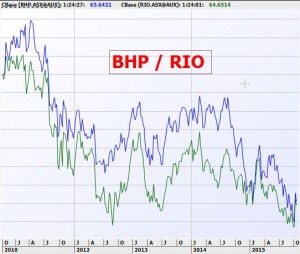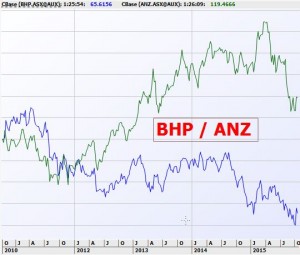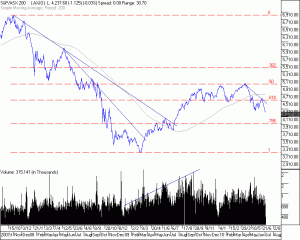In today’s global investment environment, equities, fixed interest or property from around the world is very accessible.  This means 2 things – some part of the world will always be performing better than another and any investment has a true diversified alternative.
This means 2 things – some part of the world will always be performing better than another and any investment has a true diversified alternative.
 Diversification is measured by the correlated move of 2 investments – for example if BHP changes its value (up or down) there is a high probability that RIO will move in the same direction. So the 2 investments do not offer much diversification, they may vary a little but from the chart to the right similar issues will effect both companies.
Diversification is measured by the correlated move of 2 investments – for example if BHP changes its value (up or down) there is a high probability that RIO will move in the same direction. So the 2 investments do not offer much diversification, they may vary a little but from the chart to the right similar issues will effect both companies.
A lower correlation would occur between BHP and ANZ being from different market sectors, but still the same fate may be born if the Australian share market is struggling.
A lower still correlation may be obtained with BHP and Microsoft.
An even lower still correlation may be obtained with BHP and Government Bonds or BHP and Property. Both of which have an extremely low correlation of a similar move.
So why is this important? — The object of diversification is to create a robust investment strategy that will not collapse if the wind is blowing the wrong way. The more assets you have in your investment portfolio that are moving in different directions the safer and more robust your investments will be. This doesn’t necessarily lead to a lower return, especially with the correct rotations and reweighting, but it does lead to safer investments.



